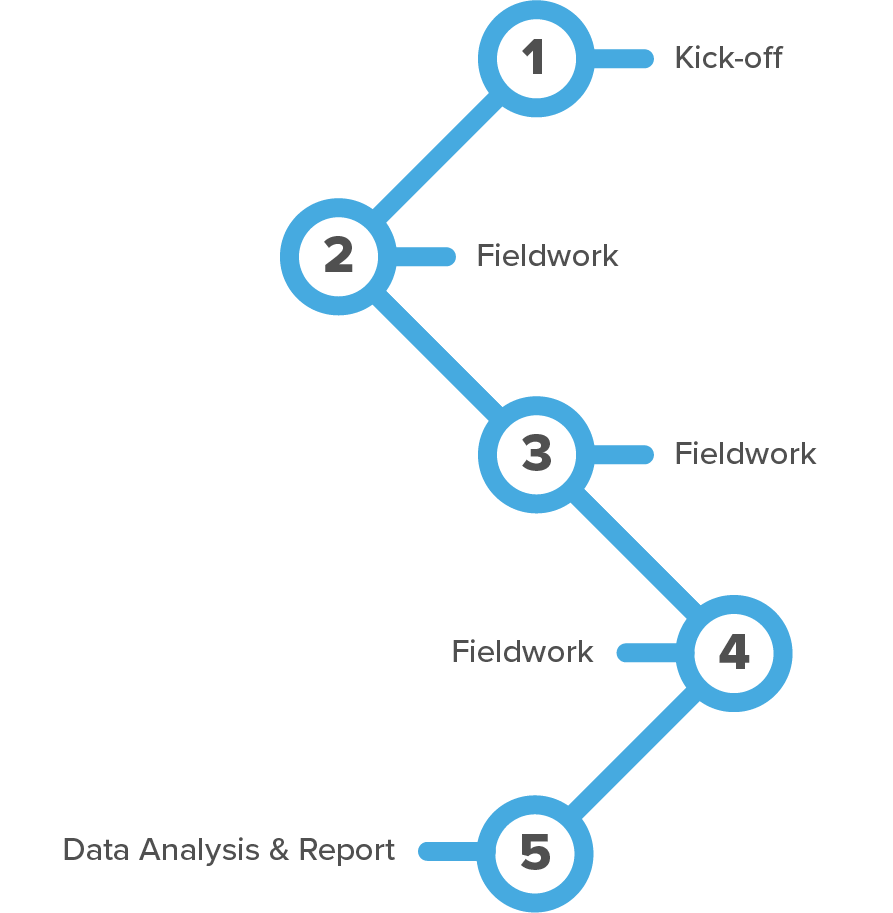Implicit Association Testing
For Marketing Research
-
Unlock and measure your customer’s autopilot
-
Validated in 100+ studies published in top-tier journals
-
5 days Project Completion







Applications of IAT
Implicit Testing with reaction time measures has three main areas of application in marketing research: as a way to track the health of a brand and its assets, to learn more about the customer and to test new marketing materials.
Below we list the most common research applications with their respective IAT designs.

Tracking brand health and assets
Brand health: Brand-attribute association (e.g., ‘Coca Cola’ and ‘Happiness’). This can be conducted at a regular time interval, or as a pre- and post campaign test.
Brand asset: Brand-asset association (e.g., ‘Budweiser’ and its specific shade of red)

Marketing Testing
Packaging test: Brand-attribute association (test versus control group)
Proposition test: Brand-attribute association (test versus control group)

Customer Insights

How it Works

Do you feel traditional market research doesn’t fully deliver on what you would actually want to measure? With implicit testing, you take away the guesswork from your most important branding and marketing decisions.
Reach the true decision maker
Traditional market research methods such as surveys and focus groups capture only a fraction of what consumers truly think and feel about your brand. More often than not, they either can’t or won’t say what truly goes on inside their head.
Implicit Association Testing bypasses the conscious limits of the brain and taps directly from the autopilot. The IAT is an online testing procedure, developed by a team of the world’s leading social psychologists at Harvard University. The methodology uses reaction times as a way to decipher the associative strength between two thoughts in the mind.
A brand is an association in the brain
Is our brand top of mind? Will our next ad campaign increase mindshare? What is our strongest brand asset? Clearly, many market research questions revolve around the current or future position of one’s brand in the customer’s mind.
IAT provides a powerful and objective measure to measure just that. By design, the method bypasses social desirability and introspective limitations, as it uses reaction time measures of which the respondent has no conscious control. The world’s leading brands use implicit testing to track their brand health, gain new consumer insights and test new materials.


Project Timeline
-
Day 1: Kick-off
The project’s specific associations of interest, respondent criteria, stimuli and additional questionnaires will be discussed. After client approval, the IATs will be programmed and the fieldwork will commence. -
Day 2-4: Fieldwork
The respondents will be recruited and complete the reaction time tasks online, from their own homes. -
Day 5: Data Analysis & Report
Our automated IAT analysis detects any insincere responses and discards these from the dataset. The reaction time differences will be used to compute d-scores (which normalizes individual baseline differences in reaction speed). The final report grants you a clear and practical overview of the findings.

Integrations

“The Neuro Research proved to be very valuable to us. We made a deliberate choice for neuromarketing research. We don't want socially accepted answers, we want real insights.”

Frequently Asked Questions
The closer two associations are wired together in the brain, for instance Coca Cola and Happiness, the faster the brain is capable of processing both thought concepts together. The IAT is a reaction time based procedure to measure the people’s unconscious attitudes, which uses this principle of mental processing speed. This does not mean we simply ask people a question and then record how quick they responded (such a procedure should still be deemed explicit research).
Instead, the IAT follows a standardized series of simple categorization tasks. Respondents are presented with varying words and/or pictures, one at a time. By means of pressing a button, they have to categorize each stimulus in accordance with a specific categorization rule. For instance: Coca Cola goes to the left button and Pepsi goes to the right button.
In subsequent rounds the brand stimuli are mixed with stimuli relating to the association we want to measure. For instance: the association with happiness (versus sadness) is thrown in the mix. The IAT looks at reaction time differences between compatible rounds (Coca Cola + Happiness) versus incompatible rounds (Coca Cola + Sadness). Large differences in reaction time indicate a strong association.
Reaction time measures are used internationally by academia and market research alike to pinpoint the unconscious strength of associations. The papers below provide a useful reading tour all the way from the original validation of the methodology, advances in its scoring algorithm, to its widespread present day application in the marketing domain.
Development of the methodology:
Greenwald, A. G., McGhee, D. E., & Schwartz, J. L. (1998). Measuring individual differences in implicit cognition: the implicit association test. Journal of personality and social psychology, 74(6), 1464.
The scoring algorithm, as used by Unravel Research:
Greenwald, A. G., Nosek, B. A., & Banaji, M. R. (2003). Understanding and using the implicit association test: I. An improved scoring algorithm. Journal of personality and social psychology, 85(2), 197.
Usage in consumer research:
Gregg, A. P., & Klymowsky, J. (2013). The implicit association test in market research: potentials and pitfalls. Psychology & Marketing, 30(7), 588-601.
Maison, D., & Gregg, A. (2016). Capturing the consumer’s unconscious: applying the implicit association test in consumer research. In Routledge international handbook of consumer psychology (pp. 161-182). Routledge.
The IAT, being a categorization task, requires association-specific words and/or images as its stimuli. The association of interest therefore needs to be determined before programming the study.
In many research projects, the selection of the associations that are to be measured is rather straightforward (e.g., brand identity attributes, the product category or a simple positive-negative scale). In the case of consumer insight research (e.g., a study into the subconscious motives behind a particular purchase), it’s valuable to precede the actual IAT by an exploratory study into which associations are potentially interesting.
We mean business with







 EN
EN  NL
NL 

